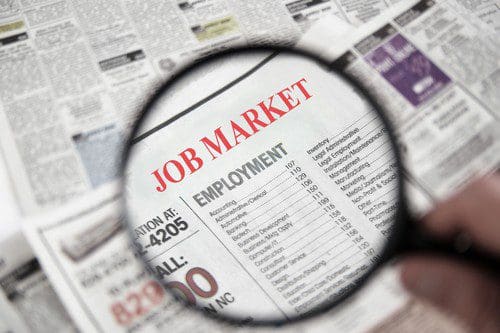Davos—Nice But Not Real

A light snow is falling and the streets are full of a special breed of humans known as Davos Man. Of course, women are present also, but they are subsumed in the use of the term Man as meaning Mankind. A Davos Man is either very rich, very famous, very intelligent, or all three. He […]
Markets Celebrate Another Week of Gains


The markets celebrated another week of gains following another relative decline in U.S. inflation – from a high of 9.1% in June 2022, U.S. inflation was 6.5% YoY to the end of December. Last week, the S&P 500 index gained 2.71%, while the Bloomberg Long-Term U.S. Treasury index gained 1.43% in anticipation that the Federal Reserve will be less aggressive in raising interest rates and stabilizing prices. Major banks, including JP Morgan, Bank of America, and Wells Fargo, posted strong earnings by not only beating consensus earnings expectations but also affirming the economy’s current strength.
This week, short from Martin Luther King Jr’s Day, brings several closely watched economic reports as investors seek confidence in the economy. Wednesday’s report on Retail Sales and Industrial Production, followed by the Housing Starts and Existing Home Sales report, will hopefully reveal that the economy could be on its way to a “soft landing,” or at least cooling inflation without a significant recession. 4Q earnings sneak peek will be led by Charles Schwab, Morgan Stanley, Proctor & Gamble, and State Street before heading into peak earnings week starting the week of Jan. 22nd.
Is Style Still in Fashion?


From 2007 to 2021, ever since the 2008 Financial Crisis, Growth stocks have trounced Value stocks 11 out of the last 15 calendar years – AKA batting average of 73%. Post-Covid, Value stocks not since the Dotcom bubble hammered Growth stocks in 2022 (-29.41%), outperforming by 2,418 bps. Over the next few series of weekly commentaries, we will dive into understanding the reasoning, fundamental changes occurring to the S&P 500 index, and whether this is a blip in the Growth saga or are Value stocks becoming a trend leader. But let’s not forget, since the 2008 Financial Crisis, growth stocks have benefited from an environment of Fed policies of cheap money (Quantitative Easing, Pandemic Stimulus), federal bailouts, low inflation, low-interest rates, and last but not least, low-cost manufacturing in China all coming to a sudden halt in 2022. At Sowell, we fundamentally believe in style rotation between growth-and-value stocks in part due to its fundamental correlation to changing market environments and history repeating. But that fundamental investment philosophy also hinges on the make-up of an index, the dominant sectors leading the respective styles, and its correlation to the economy, interest rates, inflation, and market-capitalization of stocks. It is premature to state Value stocks will be the next trend leader after one data point, but all the right stars are in place.
Sowell Management Named Top RIA by Forbes – Company credits clients, team members for making list


Sowell Management has been named to Forbes inaugural list of America’s Top Registered Investment Advisor (RIA) Firms. The 2022 list recognizes the leading RIA firms across the U.S. with decades of experience and a proven record of accomplishment seeing clients through market turmoil and preserving their wealth. Sowell Management ranked 94th in the prestigious annual […]
Back to Basics


Ringing in the new year, inflation, interest rates, and jobs will be the key global factors for 2023’s market outlook. Our initial focus will be on an aspect of inflation. The Federal Reserve’s definition of Inflation “is the increase in the prices of goods and services over time.” Inflation cannot be measured by an increase in the cost of one product, service, or even several products or services. Instead, inflation is a general increase in the overall price level of the goods and services in the economy. Inflation is a measure of the end reaction. The catalyst is the basis of a number of fundamental inputs, including monetary policy, supply-demand, prices of goods and services, productivity, and cost of labor, to name a few. The causality dilemma between wage inflation and rising hourly wages at the rate of inflation to maintain the cost of living is a major basis input to rising inflation. As illustrated by select major states, minimum wages such as CA, FL, IL, and NJ have been rising at rates well above the rate of inflation. The rise in labor costs eventually has to be absorbed by increased prices of goods and services; hence, inflation. As that broad market attempts to battle prices of goods and services by addressing supply and consumer demand, another effect of the Fed monetary policy, unless state policymakers moderate rising minimum wages, is to control labor costs by employment supply and demand – an increase in unemployment.
Amgen acquires Horizon Therapeutics


Last week a major acquisition by Amgen was lost among the volatility of FED action and jawboning as Amgen announced the acquisition of Horizon Therapeutics. Horizon has become one of the leading biotech firms specializing in medicines and treatments for rare diseases. For the last couple of decades, starting with the growth of generics, large Pharma has looked at rare diseases to make a profit and a difference. Horizon has taken that strategy through its relentless focus on rare diseases with unmet needs, specifically autoimmune and severe inflammatory diseases. More than that, they have backed this priority up with a pipeline of new medicines. This pipeline drove a small feeding frenzy as, in early November, Horizon announced its plan to field acquisition offers. After a month with the likes of Sanofi, J&J, and others, this “technology” was purchased by Amgen for $28 billion.
Is the U.S. Moving On From Free Trade? Industrial Policy Comes Full Circle


Free trade was the mantra of economists for decades. The past few years have seen a return to Alexander Hamilton’s way of thinking. A Wolfspeed silicon-carbide fabrication plant in Marcy, N.Y., produces material in demand by electric-car makers. The Biden administration is pushing domestic chip production with billions of dollars in subsidies in the Chips […]
Global Manufacturing Shift


Supply chain bottlenecks, anti-China political rift, and export controls have sparked a global movement to shift manufacturing away from mainland China. A major milestone of such was marked by last week’s opening of Taiwan’s TSMC $40 billion manufacturing site in Arizona, attended by President Biden. TSMC accounts for over 50% of the world’s chip manufacturing, followed by Samsung, a distant second. The top 5 world’s foundries account for 90% of the global chip production & supply, while over 65% of the foundries’ market share is from Taiwan companies. The recent U.S. Chips and Science Act to fund domestic research and manufacturing of semiconductors is met with mixed emotions among Asian nations, especially Taiwan. Shifting production locally to the U.S. is also considered a shift in geopolitical balance accompanied by the fear that this would diminish the U.S.’s presence and support for Taiwan and its Southeast Asian neighbors. Strong ties with the U.S. have always been viewed as a protective shield from China’s Communist Party.
Investor concern over zero-covid protests in China


Markets opened lower on Monday reflecting investors’ concerns about an unprecedented wave of protests against zero-covid protocols in China, and the potential repercussions on the country’s economy. On Wednesday, Fed’s chairman Jerome Powell announced the decision to slow the pace of rate increases in future meetings. Investors reacted ecstatically sending major indexes up. The Nasdaq alone gained 4.4%. On Thursday, the latest Core PCE (Core Personal Consumption Expenditure Price Index) for the month of October came in lower than expected, supporting Powell’s view that the economy is cooling down. On the same day, oil jumped following EU’s request to its members to set Russian oil prices to a cap of $60 a barrel. After a strong job report on Friday, the market closed relatively flat for the day, signaling that investors have already priced in the expectation of a 0.5 basis points increase in the Fed funds rate in the next FOMC’s meeting.
Investors Will Focus on Jobs


After an optimistic Fed minutes outlook last week, investors will focus on the labor market this week. The Job Openings and Labor Turnover Survey (JOLTS), ADP’s National Employment Report, and the Labor Department’s November nonfarm payrolls report will be released. The latest updates on home prices will become available with the release of the Case-Shiller National Home Price Index and Freddie Mac’s House Price Index (HPI) for September. Lastly, on Thursday, the Bureau of Economic Analysis (BEA) will release its Personal Consumption Expenditures (PCE) Price Index for October, offering an update on the inflation pressure faced by the American consumer and potentially showing a turn in consumers’ sentiment. This week’s commentary includes a reflection on the state of stable cryptocurrencies.
